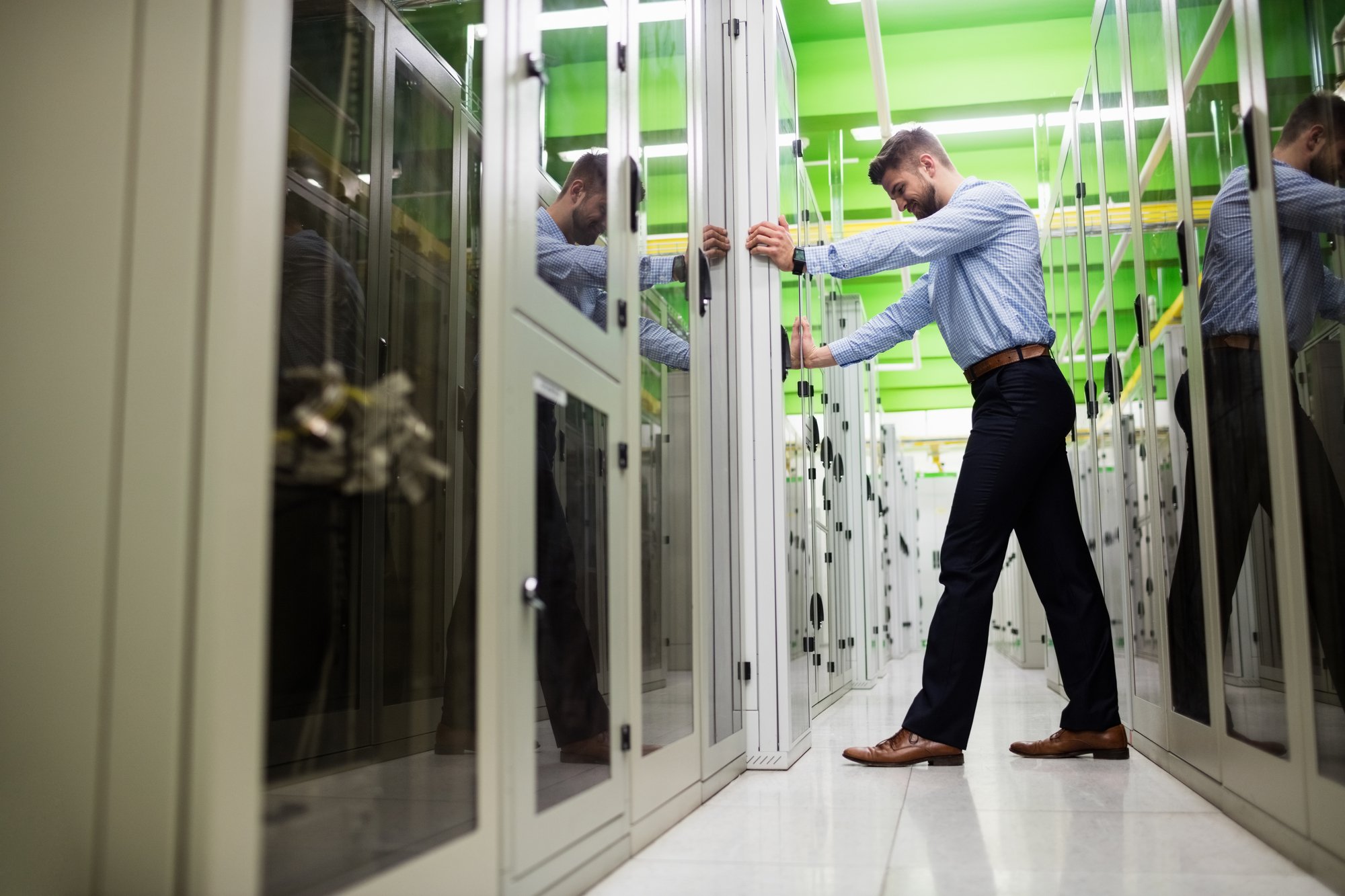This blog has been written by Chris Wozniak.
Going green isn't just a state of mind. You need to use data to understand andtrack the metrics of your system. Once you have an accurate PUE, you can use that information to further understand your data center's sustainability by knowing the carbon usage effectiveness (CUE) and water usage effectiveness (WUE). Similar to PUE, CUE and WUE are metrics that were defined and introduced by The Green Grid and can offer additional valuable insight into a data center's energy efficiency.
Carbon Usage Effectiveness
If you want to get your big organization clients to perk their ears, start talking about work to reduce their carbon footprint. CUE looks at the carbon emissions based on the electricity used by your IT equipment. For most data centers, calculating CUE is extremely easy to derive if you are already calculating PUE. One only needs to determine the amount of CO2 emitted per kWh, which is readily available from the utility. This coefficient is applied to the PUE to arrive at the CUE. For example, if you buy your power from PG&E, you can go to their website and find that they have reported 0.524 lbs of CO2 per kW as their carbon emission factor. The CUE can be calculated using this equation:

For the majority of data center operators, arriving at CUE is just that simple. However, some data centers supplement utility energy with local generation assets, such as diesel generators. Suppose these forms of energy are regularly used to supplement the energy consumed. In that case, the CUE calculation becomes much more complex, as this must be factored into the data center's overall carbon emission factor.
The driving force behind calculating KPIs, including CUE, may be different for every client. One of our clients was committed to leveraging alternative energy sources to power their data centers, which had a substantial effect on how the CUE and other KPIs would be used to make operational decisions. Their calculations were not readily available to operators and stakeholders in the company. Our team created a single visualization to represent the KPI metrics in real-time. We helped out clients determine their CUE to share with their stakeholders. We used the real-time data from the facility and the available data from their utilities to automate their CUE numbers for our customer to see and share.
For those data centers which are not consuming energy from these types of alternative sources, CUE can only be improved if PUE is improved. Having CUE available is most useful for entities who are actively using or are considering using renewable energy sources, either by way of the utility or by installing local energy assets. CUE then becomes a comparative tool, allowing a data center operator to compare their carbon efficiency against another data center that may be more invested in reducing their carbon footprint. Reducing your facility's CUE metric can also be valuable for organizations pursuing carbon tax credits. For others, it may simply be a way to demonstrate to their investors and clients that they are invested in a "greener" approach to operating their data center.
Regardless of whether having CUE available is a "nice to have" or a "must have" for your data center, having experts like Casne support your data center will ensure it is accurate and reflective of your facility's current state.

Water Usage Effectiveness
It's a well-known fact that a data center needs water for cooling and power. WUE focuses on the water used to keep all the cooling systems running efficiently and keeping the power on. The calculation looks at all water brought in and all water taken out. We have seen many customers overlook this metric. However, when a customer decides to go green, they often include this metric to make sure they are going green in all aspects of their operations. The water usage is divided by IT equipment energy to find the WUE.

How accurate is accurate enough?
It's almost always guaranteed your data center's WUE will be meeting target levels at 2 am on a Thursday in December. But is it always meeting those targets? Probably not. To truly understand your WUE, it is not only essential to have quality real-time data from your water meters, but also to make calculations of WUE several times per day. Most water meters have volume totalizers that can be made available to a real-time data platform and easily applied to the WUE calculation. It's also possible to calculate WUE from flow rates, although this becomes a little more tricky. Similar to the edge cases for calculating CUE, Casne can help you arrive at a reliable calculation for WUE regardless of your circumstances.
Do you know how much water you are using?
In this Data Center Knowledge article, researchers predict that data centers in the US will use a combined 660 billion liters of water in 2020. That's about as much water in a local lake! And suppose you are taking part in this 660 billion liters of water usage. In that case, you should know not only how much you are using, but also what technology is available to be more sustainable around water usage.
Can WUE only be calculated in new buildings?
Normally, data collection is installed during the building's construction, but with WUE, there are many easier retro-fit methods than power-based meters. We were able to retro-fit an entire Colocation space built inside a 1930 telecommunications building in less than one week. The flow and temperature metric's addition allowed for easy WUE and cooling efficiency metrics to be added to the existing SCADA and BMS platforms. Our solution allowed for future planning of cooling capacity upgrades and provided validation data to the states' Energy Efficiency departments to qualify for energy rebates.
Unlike CUE, WUE can be improved upon regardless of an organization's commitment to "going green." Whereas the carbon usage factor is completely beyond the data center's control in most cases, a data center does have some control over how much water is used in its operations. For example, the data center could choose to invest in replacing downstream assets with more efficient options and require less cooling, and therefore less water. On a higher, more strategic level, the data center could consider changes to their overall architecture to yield more efficient water usage. Regardless, WUE can offer another very valuable benchmark or point of comparison for your reliability and sustainability efforts.

Like PUE, CUE, and WUE are metrics to help you better understand how your data center performs compared to the company's standards and expectations. To ensure that your data center is seeing accurate metrics, look no further than Casne. Casne Engineering (link) has 40 years of experience in professional engineering and technology integration for critical facilities. Our engineers and technologists develop and support engineered solutions using the best available products and technologies. Contact me (chris.wozniak@casne.com) to discuss your data center's visibility and accessibility needs.


Comments